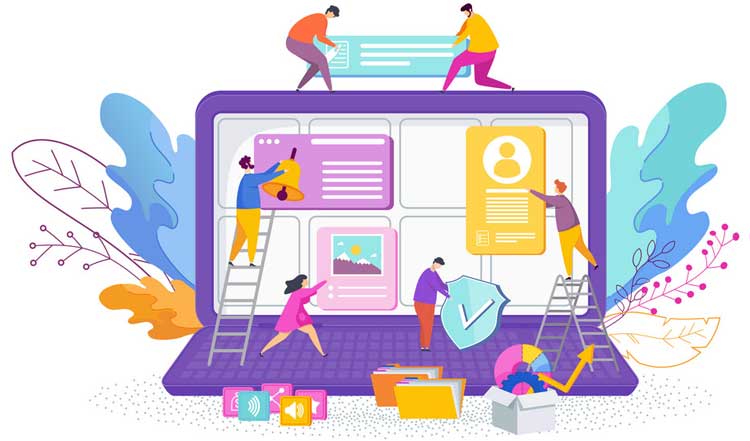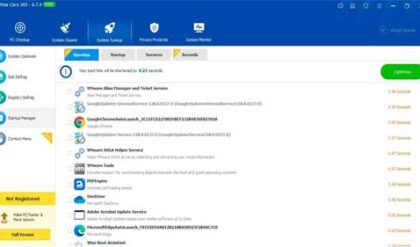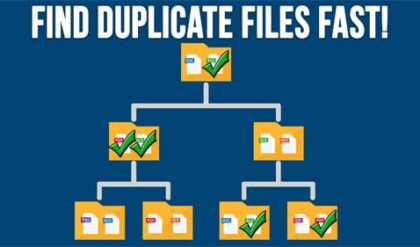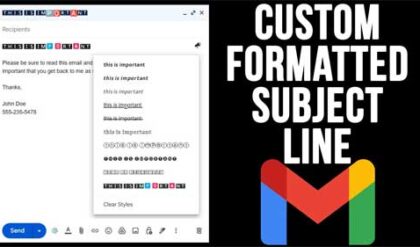How trendy is your website?
There are always things that complement one another. Whether it is pairing foods, experiences or even personal relationships; some things just work better when something else is there to support it.
Web design is no different. There are certain techniques that rely on something else in order for it to be effective or even work properly. These techniques, or technologies, work to complement one another by bringing aesthetics with functionality in most cases; making your site look good while getting it to work on different devices or browsers. As we look at some of the recent trends in web design, it is important to also take a look at those things whose support and foundation have helped to make these trends as popular as they are.
Large Background Imagery: Complemented by Responsive Design
The expression, "a picture is worth a thousand words," is attributed to a quote in the Syracuse Post Standard in 1911 by editor Arthur Brisbane who actually said, "Use a picture, it’s worth a thousand words." Since then this statement has been used to express how important images are if you want to engage users and get a message across. For web designers, images and graphics have long been a focal point of their work. However, recent trends towards using a large image as the background of a page because they are more effective at telling the visitor the correct story about the company or site as opposed to a color or pattern.
Yet, this trend does run into problems when it comes to the smaller screens of mobile devices. While crisper, high-resolution images do make it easier for the mobile viewer to experience the intent of the background image; unless the image itself scales to the screen, the effect is lost. Responsive design provides the perfect complement to this trend. By making it possible for the design professional to scale the image itself to best fit the viewer’s screen size he or she can be assured that nothing will be lost across platforms.

If you would like to see some great examples of how full screen images are best used as backgrounds be sure to take a look at this article that showcases over 40 examples of this trend is used to really make an impact.
Mobile First: Complemented by One-page Websites
Mobile devices are driving most trends in web design nowadays and that is attributed to the fact that, according to Google’s web traffic, mobile device traffic is nearly equal to that originating from a desktop. To accommodate this growing need, more designers are thinking about mobile users when they plan their projects. This if further evidenced by the multitude of debates that rage among designers as to which mobile technology is the best to use.
So while some spend their free time arguing the benefits of their preferred method of mobile first, others find ways to make it even easier for their mobile visitors to experience their websites, and that is thanks to the trend of one-page websites. Serving as the perfect complement to the mobile first trend, one-page sites take the clicking or tapping out of the equation and have users scroll through the page to consume all of the content. Not only does this make for an easier experience, but it also eliminates the nightmare of having to load multiple pages when data networks are less than friendly.
Efficient Content: Complemented by Typography
Content has ruled the web since its earliest days, yet this soon became confused with the notion that more is better. As content creators focused in on what they thought the search engines wanted quality soon gave way to quantity. Long form content ruled the roost and visitors were presented with walls of text that didn’t really address their needs. However, as mobile devices began to take a larger portion of the browser market it became evident that the lines and lines of text were no longer effective. Content needed to be more efficient in getting its message across to those reading it.
This is where typography lends a hand. By using visual elements of typeface, font size and other elements the designer is able to set the tone and mood of the content through a visual element rather than excess words. These skills could even be harnessed to use pair language with visual design to really engage the audience.
If you need some inspiration on how typography can really drive the mood and emotion of your message, take some time to look over some of the samples from We Love Typography, which is a great resource for anyone interested in saying more with their font types.
User Experience: Complemented by Flat Design
User experience is not new trend; however, there are trends in web design that address the ever-evolving needs of UX. Recently, those trends have focused around page load times and navigation elements due to more people using mobile devices. In order to lessen the time, it takes to load a page, graphic elements needed to be reduced where they could. Hence, flat design began to grow as a rising trend. By removing excess graphical elements such as drop-shadows and three-dimensional effects, the size of the page would shrink. These flat designs also made it easier to create navigation elements that people on mobile devices could interact with instead of icons and buttons that weren’t as effective. Unlike most trends, user experience is one that will be around for as long as the web exists. It has become so important to design pages that make it easier on the visitor that even Google has started taking UX elements into consideration when creating their search results algorithms.
Visual Storytelling: Complemented by Parallax Scrolling
Many of the recent trends support the growth of visual storytelling as an important part of web design nowadays. Users no longer want to have dull, dry content fed to them. They want something that entertains while providing them with useful information. Since everyone loves a good story, web designers have begun to use the tools at their disposal to give their audience what they want.
One of the most promising tools to do just that is parallax scrolling. Using two or more superimposed layers that scroll at different speeds, the designer is able to create depth even when flat design is employed. This helps tie in some of the necessary visual elements when it comes to telling your audience that story.
The very nature of a trend is that it will eventually fade away. Years from now we may look at some of these and wonder how we ever thought they were a good idea. However, some will remain as important staples of the right way to build a site. Regardless, it is always important to make sure that the tools and techniques you use in your work compliments the others to make the site as engaging and visually appealing as possible.
About the author: Linda S. Davis is a marketing manager. Besides, she likes writing. So she prefers to spend her spare time working as one of professional academic writers. In this case, she has an opportunity to share her experience with others.






